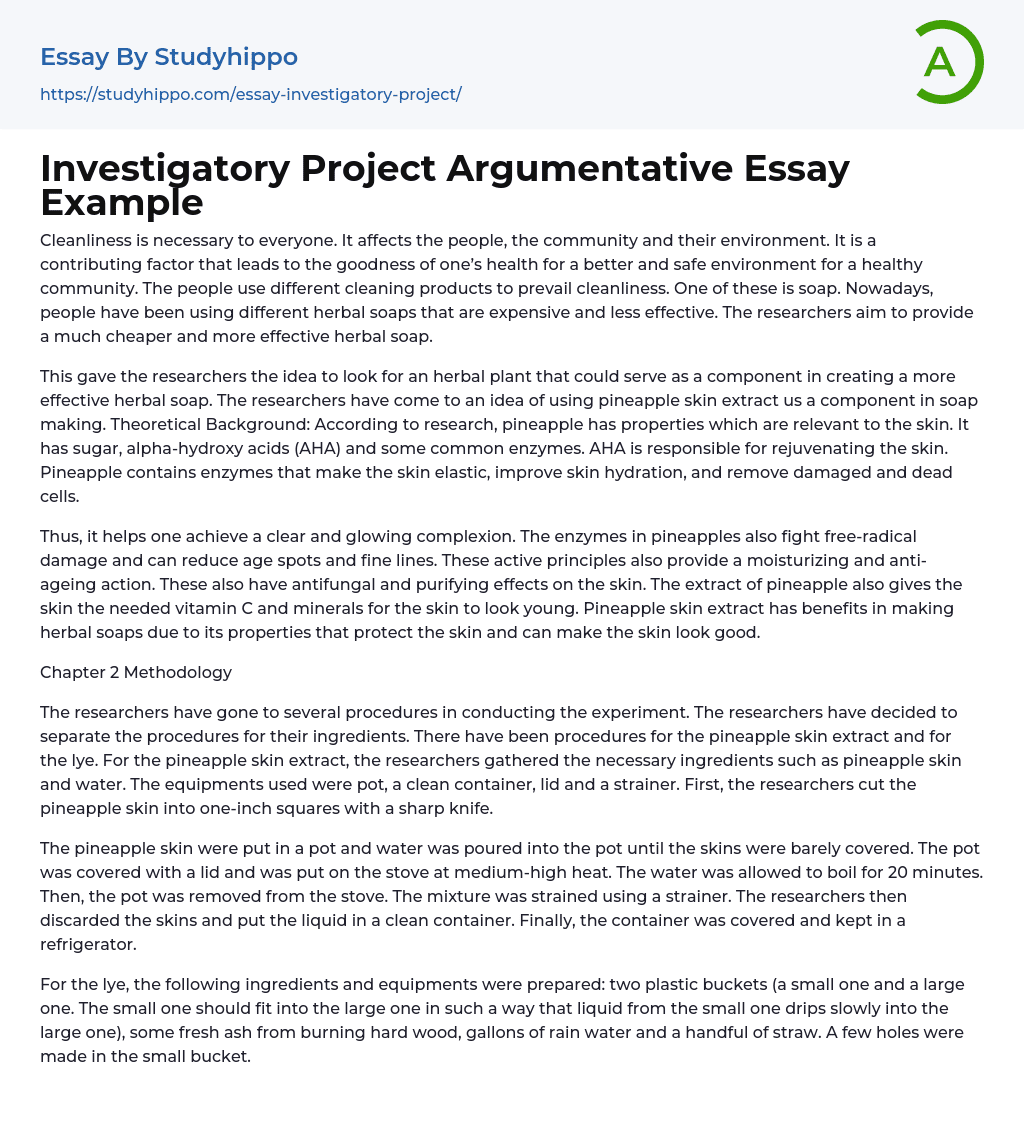Cleanliness is vital for individuals, communities, and the environment. It is essential for maintaining good health and a safe community. People use various cleaning products, such as soap, to ensure cleanliness. However, there is a current trend of using costly and ineffective herbal soaps. Therefore, this study aims to create a more affordable and efficient herbal soap alternative.
The researchers sought an herbal plant that could enhance the potency of herbal soap, leading them to consider incorporating pineapple skin extract into the soap-making process. Theoretical Background: Previous studies have revealed the beneficial properties of pineapple for skin care. Pineapple contains sugar, alpha-hydroxy acids (AHA), and several enzymes. AHA plays a crucial role in revitalizing the skin by increasing its elasticity and enhancing hydration. Moreover, pineapple enzymes assist in eliminating damaged and deceased skin cells.
<
/p>
Pineapple aids in achieving a radiant and clear complexion through its ability to combat free-radical damage, diminish age spots and wrinkles, as well as provide moisturization and anti-aging properties. It also possesses skin-purifying effects and acts as an antifungal agent. Pineapple extract nourishes the skin with vitamin C and minerals to maintain a youthful look. Furthermore, pineapple skin extract offers advantages for creating herbal soaps by safeguarding the skin and improving its overall appearance.
Chapter 2 Methodology
The experiment consisted of multiple procedures, which were divided into two parts based on the ingredients: pineapple skin extract and lye. To prepare the pineapple skin extract, the researchers gathered the necessary materials – pineapple skin and water – along with a pot, a clean container, a lid, and a strainer. Initially, they used a sharp knife to
slice the pineapple skin into one-inch squares.
The skins of the pineapple were placed in a pot and covered with water. The pot was then heated on the stove at medium-high heat and boiled for 20 minutes. Afterward, the mixture was strained to remove the skins and transferred to a clean container. Finally, the container was covered and refrigerated.
In order to make the lye, the researchers collected two plastic buckets - one small and one large. The small bucket had to be able to fit inside the large bucket in a manner that allowed liquid to drip slowly from the small bucket into the large one. They also gathered fresh ash from burning hard wood, gallons of rain water, and a handful of straw. Following that, they created tiny holes in the small bucket, ensuring that these holes were of a size that only permitted liquid to flow through them. To test these holes, water was poured through the bucket.
The small bucket, which had a straw to cover holes, was placed inside the large bucket. This arrangement allowed liquid to drip through the holes without collecting debris directly into the large bucket. Wood ash was added above the straw, and cold water was poured over it.
The ash was positioned above the straw to separate it from the holes. The straw base acted as a barrier to prevent wood ash from mixing with the water. As the water was poured gradually, liquid lye passed through the openings in the small bucket and was gathered in the large bucket. Once all the water was poured over the ash, the process
was repeated with the liquid collected in the large bucket. The lye solution that was collected was poured over the wood ash (located above the straw) once more.
The lye solution was reused multiple times to concentrate it. After each repetition, the solution was collected and stored in a separate container for soap making. Metal utensils were avoided to prevent a temperature increase in the lye. Its strength was tested before storage, often with the help of fresh eggs.
If an egg remains buoyant near the top of the solution with a small amount of lye water above it, then the lye is the correct strength. Conversely, if the egg sinks, it indicates that the lye is not strong enough. On the other hand, if the egg floats well above the solution, it signifies that the lye is too strong. In cases where the lye lacks strength, the researchers introduced additional wood ash and repeated the process with the same solution. When the lye was too strong, water was added and the strength was reevaluated using the egg. This process of adding water was continued until the researchers were confident that the lye had reached the appropriate strength.
- Organic Chemistry essays
- Acid essays
- Calcium essays
- Chemical Bond essays
- Chemical Reaction essays
- Chromatography essays
- Ethanol essays
- Hydrogen essays
- Periodic Table essays
- Titration essays
- Chemical reactions essays
- Osmosis essays
- Carbohydrate essays
- Carbon essays
- Ph essays
- Diffusion essays
- Copper essays
- Salt essays
- Concentration essays
- Sodium essays
- Distillation essays
- Amylase essays
- Magnesium essays
- Acid Rain essays
- Bottled Water essays
- Agriculture essays
- Albert einstein essays
- Animals essays
- Archaeology essays
- Bear essays
- Biology essays
- Birds essays
- Butterfly essays
- Cat essays
- Charles Darwin essays
- Chemistry essays
- Dinosaur essays
- Discovery essays
- Dolphin essays
- Elephant essays
- Eli Whitney essays
- Environmental Science essays
- Evolution essays
- Fish essays
- Genetics essays
- Horse essays
- Human Evolution essays
- Isaac Newton essays
- Journal essays
- Linguistics essays




